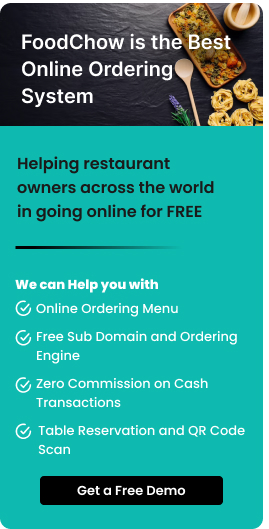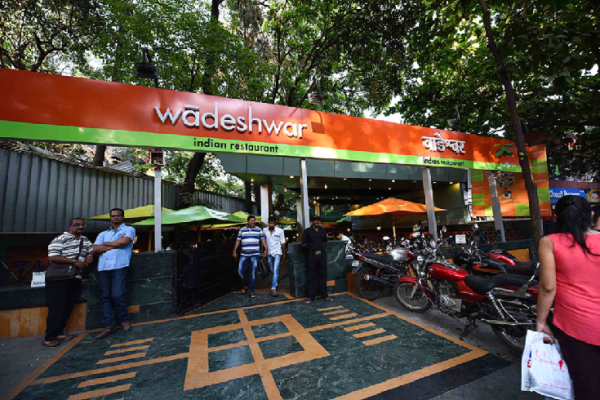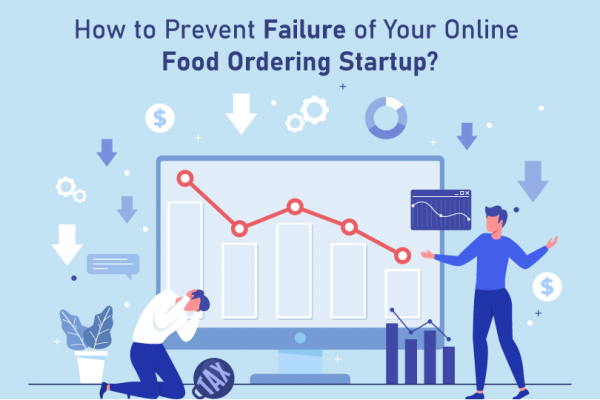Welcome to the world of ordering systems, where convenience meets efficiency! In this fast-paced digital age, the term order has evolved to cater to our ever-growing needs. But what exactly is ordering? Simply put, it is the medium of requesting or purchasing goods or services through a designated system or platform. From the early days of handwritten lists to the emergence of online ordering, this practice has come a long way. Ordering systems is now an integral part of our daily lives, revolutionizing how we shop, dine, and avail services. This article will explore the meaning and history of ordering systems, delve into real-life examples, and uncover multiple opportunities they offer. So, whether you’re a business owner looking to streamline your operations or a consumer seeking convenience, join us as we unravel the fascinating world of ordering systems in 2023. Prepare to be amazed!
Ordering systems, in their simplest form, are mechanisms that allow individuals or businesses to request or purchase goods and services. It provides a structured and organized process for both the customer and the service provider, ensuring a smooth and efficient transaction. Whether ordering a meal from your favorite restaurant, booking a hotel room, or purchasing products online, ordering systems is now a necessity.
With the rise of technology, ordering systems have evolved to embrace various platforms such as mobile applications, websites, and even voice assistants. However, it allows customers to place orders globally and businesses to optimize operations and improve customer satisfaction. The convenience and efficiency of furnished ordering systems have transformed interactions with organizations and consume goods and services.
History of ordering systems
The word Order goes back to ancient civilizations, where individuals would make lists or requests for goods and services. However, it was not until the advent of the printing press and the rise of commerce in the 19th century that ordering systems started to take shape. During those days, lists in writing or catalogues were famous for manually noting orders.
As technology advanced, the emergence of telephones and telegraphs in the early 20th century revolutionized the ordering process. Customers have the flexibility to place orders remotely, eliminating the requirement of physical presence. It marked a significant change in businesses operated, bringing efficiency and customer satisfaction.
The arrival of the internet in the late 20th century brought about another wave of transformation in the ordering systems. With the rise of e-commerce, customers now place orders online, browse through catalogues, and make purchases with a click. However, this opened up a world of possibilities, enabling businesses to reach a global audience and customers to access a wide range of products and services from the comfort of their homes.
Examples of the Ordering system
To better understand the concept of ordering systems, let’s look at some real-life examples:
- Food delivery platforms: Companies like Uber Eats, DoorDash, and Grubhub have revolutionized the food industry by providing a platform for customers to order meals from their favorite restaurants. These platforms offer a wide range of options, allowing customers to browse menus, customize their orders, and have them delivered to their doorsteps.
- E-commerce websites: Online marketplaces like Amazon, eBay, and Alibaba have transformed the way we shop. Customers can now order products from various sellers, compare prices, read reviews, and make secure payments—all from the comfort of their homes. These platforms have created a global marketplace, connecting buyers and sellers from around the world.
- Hotel booking platforms: Websites such as Booking.com, Expedia, and Airbnb have simplified the process of booking accommodations. Customers can search for hotels or vacation rentals based on their preferences, view photos, read reviews, and make reservations online. This eliminates the need to make phone calls or visit multiple travel agencies, making the booking process quick and hassle-free.
- Appointment scheduling software: Healthcare providers, beauty salons, and other service-based businesses have adopted online appointment scheduling systems. These systems allow customers to book appointments at their convenience, view available time slots, and receive reminders. This not only saves time for both parties but also reduces the chances of missed appointments.
Benefits of Ordering Systems
Ordering systems offer multiple benefits for both customers and businesses. Let’s take a closer look at some of it:
- Convenience: Customers now have the flexibility to place orders or make reservations anytime, anywhere, with the help of Ordering systems. Whether ordering groceries, booking a table at a restaurant, or scheduling a service no longer have to stand in a queue.
- Efficiency: Organizations can streamline their operations and improve efficiency by automating the Online ordering system process. Orders can be processed quickly, reducing the chances of errors and leading to faster turnaround times and increased customer satisfaction.
- Increased sales: Ordering systems enable businesses to reach a wider audience and increase sales. Social platforms help organizations showcase their products or services to potential customers globally. Customers can browse catalogues, read reviews, and make informed decisions, leading to higher conversion rates.
- Improved customer experience: Ordering systems enhance the overall customer experience by providing a seamless and user-friendly interface. Customers can easily navigate through menus, customize their orders, and track the progress of their deliveries, leading to higher customer satisfaction and the likelihood of repeat business.
- Data-driven insights: Ordering systems generate valuable data that businesses can leverage to make informed decisions. By analyzing customer preferences, purchase patterns, and feedback, organizations can tailor their offerings to meet customer demands. This data-driven approach allows organizations to stay ahead of the competition and provide personalized experiences.
- Cost savings: Ordering systems can help businesses reduce costs by eliminating the need for manual processes and paperwork. Organizations now allocate resources more efficiently and reduce overhead expenses by automating tasks such as order processing, inventory management, and payment collection.
- Inventory management: Ordering systems help organizations deal with real-time visibility into their inventory levels. However, this allows businesses to manage their stock efficiently, avoid stock-outs or overstocking, and optimize their supply chain. By having accurate inventory data, organizations can fulfill orders promptly and reduce the chances of disappointing customers.
- Improved communication: Ordering systems facilitate clear and efficient communication between customers and businesses. Customers can provide specific instructions or preferences, and organizations can communicate these updates or changes in real time. Reducing misunderstandings ensures a smooth transaction.
- Competitive advantage: In today’s competitive market, businesses that embrace ordering systems have a competitive advantage. By providing convenience, efficiency, and an enhanced customer experience, organizations can attract and retain customers, differentiate themselves from competitors, and stay ahead of industry trends.
Evolution of ordering systems in 2023
In 2023, ordering systems continue to evolve to meet the changing needs of customers and businesses. Technological advancements have played a significant role in shaping the future of Ordering Systems. Here are some key developments that have emerged in recent years:
- Mobile ordering: The widespread use of smartphones has become increasingly popular. Customers can now place orders through mobile applications for greater convenience and flexibility. Mobile ordering also enables businesses to send personalized offers, notifications, and loyalty rewards directly to customers’ devices.
- Voice ordering: Voice assistants such as Amazon’s Alexa, Apple’s Siri, and Google Assistant have introduced a new dimension to ordering systems. Customers can now place orders using voice commands, making the process even more seamless and hands-free. This technology can revolutionize how people interact with ordering systems providing a more natural and intuitive experience.
- Integration with social media: Many businesses have integrated Ordering Systems with social media platforms, allowing customers to place orders through social media accounts. This integration enables businesses to reach a wider audience, leverage social media influencers, and provide a seamless shopping experience within familiar platforms.
- Contactless payments: In response to the COVID-19 pandemic, contactless payments have gained popularity. Ordering systems now offer various payment options, including mobile wallets and contactless card payments. It ensures a safe and hygienic transaction and enhances the overall customer experience.
- Artificial intelligence and machine learning: Ordering systems leverage artificial intelligence and machine learning to provide personalized recommendations and improve customer service. However, by analyzing customer data, these systems can suggest relevant products, predict customer preferences, and offer tailored promotions. All this enhances the customer experience and increases the chances of upselling and cross-selling.
The role of technology in modern Ordering systems
Technology has been instrumental in shaping modern ordering systems and transforming interactions. Here are some key technologies that have revolutionized the ordering process:
- Internet: The Internet has connected businesses and customers globally, enabling seamless communication and transactions. With the internet, businesses can showcase their products or services to a vast audience, while customers can access a wide range of options.
- Mobile applications: The rise of smartphones has led to the development of mobile applications that provide a dedicated platform for ordering. Mobile applications offer a user-friendly interface, personalized experiences, and push notifications, making them a popular choice for customers.
- Cloud Computing: Cloud computing has enabled businesses to store and process large amounts of data. Ordering systems can leverage cloud-based infrastructure to handle high volumes of orders, scale their operations, and ensure data availability from anywhere, anytime.
- Big data analytics: The accessibility of data has opened up opportunities for businesses to gain valuable insights. Ordering systems can analyze customer data, such as purchase history, preferences, and feedback, to provide personalized experiences and make data-driven decisions.
- Artificial intelligence: Artificial intelligence has empowered ordering systems to automate tasks, provide personalized recommendations, and improve customer service. Chatbots and virtual assistants can handle customer inquiries, while machine learning algorithms can predict customer behavior and optimize operations.
- Internet of Things (IoT): The IoT has enabled the integration of physical devices with digital systems. The concept of ordering systems, Internet of Things devices such as smart shelves, beacons, and sensors can track inventory levels, monitor product conditions, and automate reordering processes.
Impact of Ordering Systems on customer experience
Ordering systems have had a profound impact on the customer experience. They have transformed how we interact with businesses, making the process more convenient, efficient, and personalized. Listed below are some ways in which ordering systems have improved the customer experience:
- Convenience: Ordering systems have made it easier for customers to give orders and make reservations. With just a few clicks or taps, customers can browse through options, customize their orders, and complete transactions. Meanwhile, this eliminates the need for physical presence or long waiting times, enhancing customer convenience.
- Personalization: Ordering systems can analyze customer data to provide personalized recommendations and offers. By understanding customer preferences, businesses can tailor their offerings to meet individual needs, leading to a more personalized and engaging experience.
- Transparency: Ordering systems provide transparency by giving customers real-time updates on their orders. Customers can track the progress of their deliveries, view estimated arrival times, and receive notifications at each stage of the process. This transparency builds trust and confidence in the ordering process.
- Speed and efficiency: Ordering systems enable faster and more efficient transactions. Orders can be processed quickly, reducing the chances of errors or delays. However, leading to shorter turnaround times, allowing customers to receive their goods or services promptly.
- Access to information: Ordering Softwares provide customers with the opportunity for comprehensive information about products or services. Customers can view detailed descriptions, images, reviews, and even nutritional information, enabling them to make informed decisions. This access to information empowers customers and enhances their overall experience.
- Feedback and reviews: The online systems facilitate the collection of customer feedback and reviews. Customers can share their experiences, rate products or services, and provide valuable insights. This feedback loop allows businesses to improve their offerings and address issues, if any.
Ordering system best practices
Organizations should follow certain practices to make the maximum from the Ordering Systems. Listed below are some key recommendations:
- User-friendly interface: Ensure that the ordering system has a user-friendly interface that is easy to navigate and understand. Customers should be able to browse options, customize their orders, and complete transactions without confusion or difficulties.
- Clear product or service information: Provide comprehensive and accurate information about products or services. Include detailed descriptions, high-quality images, pricing, and any relevant specifications. All this helps customers make informed decisions and reduces the chances of misunderstandings.
- Secure payment options: Offer secure and trusted payment options to instil confidence in customers. Incorporate encryption and other security measures to protect customer data while processing transactions. Display trust badges or security seals to further reassure customers.
- Prompt order confirmation and updates: Send order confirmation emails or notifications to customers immediately after they place an order and provide regular updates of the orders placed, including estimated delivery or completion times. All this keeps customers informed and reassured about the progress of their orders given by them.
- Responsive customer support: Have responsive and efficient customer support to address customer inquiries or issues. Offer multiple discussion opportunities, such as phone, email, and live chat, and cater to various customer preferences. Respond promptly and courteously to customer queries or complaints.
- Integration with other systems: Integrate the ordering system with other business systems, such as inventory management, accounting software, and CRM systems. All this ensures seamless data flow, reduces manual errors, and provides a holistic view of the business operations.
- Continuous improvement: Regularly analyze customer feedback, reviews, and data to identify areas for improvement. Monitor customer satisfaction levels and make necessary adjustments to enhance the ordering experience. Embrace new technologies and industry trends to stay ahead of the competition.








